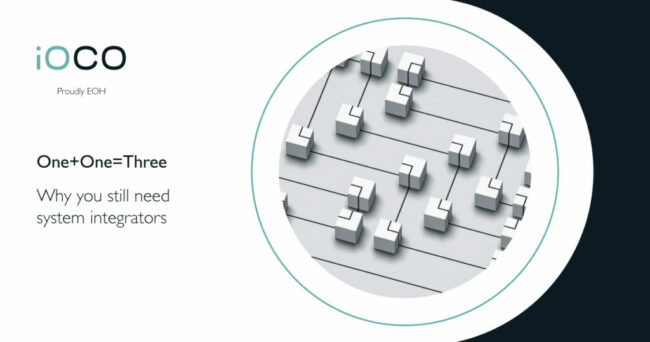Businesses today have a lot of options when it comes to software development. Whether they choose to go the custom, bespoke route, or use out-of-the-box products, there is a level of fine-tuning required to make sure the software meets the organisation’s needs.
With the use of cloud solutions increasing across industries and sectors, most companies are choosing Software-as-a-Service (SaaS) as an easy way to get the functionality they are looking for. However, while combining different tools to form a complete system, with modules chosen for their best fit to a business need, is indeed possible, it requires expertise to integrate. Most good SaaS platforms come with an API-first approach, meaning that a good integrator can assemble various components together and allow information to flow between them. A mash up of the best bits, if you will.
Here’s an example. Jo’s company builds bespoke made to order fireworks displays, sold through a vast sales network of individuals. For her distribution portal, she would like her sales agents, and by extension customers, to enjoy a truly individualised slick experience whether they are using a phone or a laptop. They must have access to their account and profile, they should be able to review all previous orders and invoices, they should be able to communicate directly with the sales and support team or with conversational AI if they are not available, browse the product catalogue, design and visualise their clients fireworks display, visualise the status of their order in the manufacturing process, process returns and view the status of any returns in process, and receive proactive messaging around account status as well as possible cross sell opportunities.
Jo therefore needs at least six subsystems - all of which need to be integrated and surfaced through the interactive visual experience which is the app and website. Some of these might include:
- Identity and access management
- Customer relationship management
- Product catalogue
- Manufacturing and logistics
- Financial systems
- BI and analytics around purchase behaviour
- Bots
There are a thousand choices for each of these subsystems, but if it's an established business, chances are most of them are in place and entrenched (unless Excel is still being used where it shouldn't, which it most probably is).
With this collision of multi-vendor solutions comes the need for a standard way to bring them together. Every platform has its own way of exposing its data and functions to integrators, but at least these days there is some commonality in the most used and accepted approaches. A good integrator will be a master of them all, and be able to plug in any additional components where needed to realise the vision required by the company. A great integrator will know how to assemble without adding additional interdependencies and stress into an already creaking smorgasbord of technological divergence.
By bringing these independent components together, the value derived from them is compounded. On top of this now interconnected singular system, seemingly unrelated datasets glued together through a common thread start appearing, to provide insights no-one realised were there. Correlations previously unseen start being appreciated. Value unrealised starts bubbling to the surface and information becomes a true distinguisher.
In short, 1+1=3. Jo can now get the insight that people with the initials G and F spend the most on fireworks, and adjust her marketing efforts accordingly.
You don't need to have a business as unique as fireworks displays to embrace bespoke integration and software solutions, and you don't need to settle with a less than optimal customer experience if you adopt generic SaaS and COTS solutions into your enterprise architecture. They are the starting ingredients to your potential – you just need a great chef to mix them correctly to realise it.
In particular, those solutions that use an API-first approach allow the rapid implementation of functionality that yields a visible business value. There are other positive aspects of this approach that are not as easy to detect and acknowledge without some expertise and understanding of what to give consideration. An API-first approach can have a powerful effect on how clients interact with services. The approach offers transparency, scalability, performance, and cost benefits and can actually change the way enterprise companies organise their infrastructure for the better. It's all perfectly possible, you just need someone to help you see it, and assemble the components together properly.
